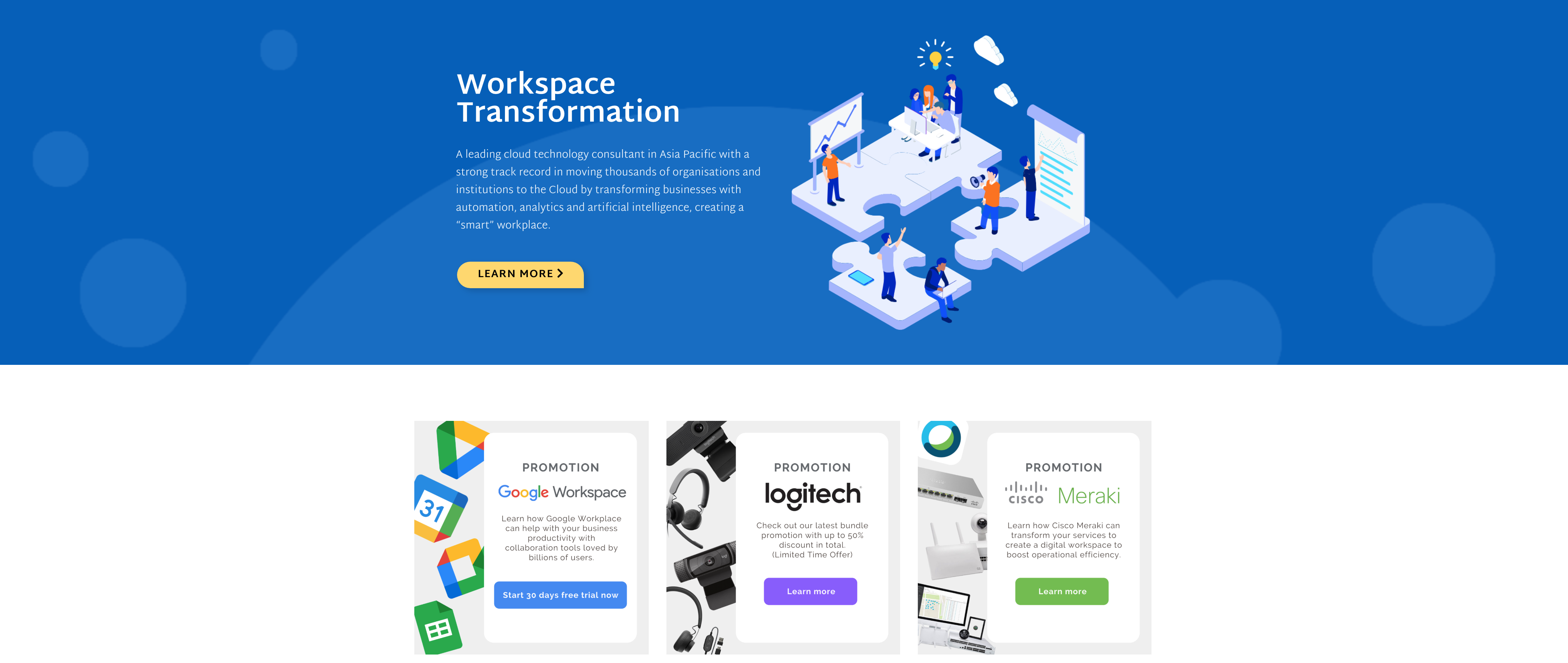Collaborating to Breathe New Life Into Our Website
Muhammad Syafiee2021-08-06T12:18:48+08:00
A website is one’s most important marketing asset. It acts as beyond a salesperson and a brand ambassador, but also to genuinely connect with your potential customers, whether through engaging content, mobile-responsive layout, or intelligent analytics and personalization. It is the face of your business and forms the foundation of your digital identity. Therefore, keeping your website fresh and up to date could be beneficial to your business as it provides visitors with a better user experience leading to better conversions.
PointStar recently launched a revamped website for Malaysia and Singapore, with Indonesia rapidly under development as this blog post goes live. This was the third website revamp for PointStar in four years. According to Business 2 Community, the average lifespan for a website is 1.5 to 2.5 years. Because design trends change and technology advances, this is the average amount of time that a redesign will feel “fresh” and competitive.
The website revamp process
As this is not PointStar’s first revamp, we have shared our collective experiences into making sure everything goes smoothly and organized from start to finish. Here were a few steps we took to ensure our website revamp project ran smoothly:
1. Perform Site Audit & Evaluate
Before updating the website, we must first evaluate the current website pages. This step will help us determine what content should be kept, updated, or discarded. It is not entirely surprising that you may discard more pages than expected but this is only because you’d want to keep your content fresh, topical and updated.
When performing a site audit, we considered the goals we wanted to accomplish with the redesign. Below are the goals that we targeted:
- Reduce bounce rate
- Increase conversion rate
- Improve website navigation
- Boost on-site SEO performance
Google Analytics is a handy tool that we used to help with our site audit. It provided us with the essential metrics and analytics that we used to improve our web content. We’ve also used Google Sheets to list down all of the pages on our domain. This not only helps us to filter out the pages that were needed to be kept or discarded but also enabled us to assign those pages to subject matter experts to evaluate and give their recommendations for content ideas. This process was entirely aided by Asana, our task management system. The whole team involved in the website revamp collaborated on Asana to share content ideas and feedback while keeping the tight deadlines in check.

2. Create a Strategy
We had weekly meetings via Google Meet to carve out a plan for the website revamp. The outlined plan was aligned with the goals we wanted to achieve. We included things like:
- Deciding on a website design with great usability and ease of navigation.
- Choosing to host our website on Google Cloud Platform which enabled us to pick the nearest datacenter available in Singapore.
- Mapping out content optimization for all pages—look for new keyword opportunities, modify title tags, create meta descriptions, update old blogs, and so on.
- Updating our current URL structure to improve user experience.
- Prioritizing internal linking from one page to another page to boost SEO.
- Implementing a tracking code to analyze the flow of site visitors and their behavior.
- Enabling site cache to reduce website loading times.
- Investing in pay-per-click ads and scale up our email, content, and social media marketing efforts to increase engagement and conversions.
3. Assess & Implement
We assessed the deliverables that should be carried out for the website revamp. Examples of deliverables are web copies, articles, videos, graphics, call-to-action (CTA) buttons, or survey pop-ups.

Once everything was ready, we prepared for strategy implementation. We deconstructed the existing website — starting with the homepage, identifying the main categories and subcategories, and looking for database interactions. Then, completed the sitemap for a redesign.
4. Review & Launch
By this stage, the whole team took a final look at our revamped website and tested its functionality and accessibility. Once the site was error-free and met the essential requirements, we flipped the switch and went live with the website on 12 July 2021.
Asana
Want to organize, collaborate manage a big projects such as this one seamlessly and with ease? Check in with our consultants to learn more about Asana.
Learn More
Leave a Reply